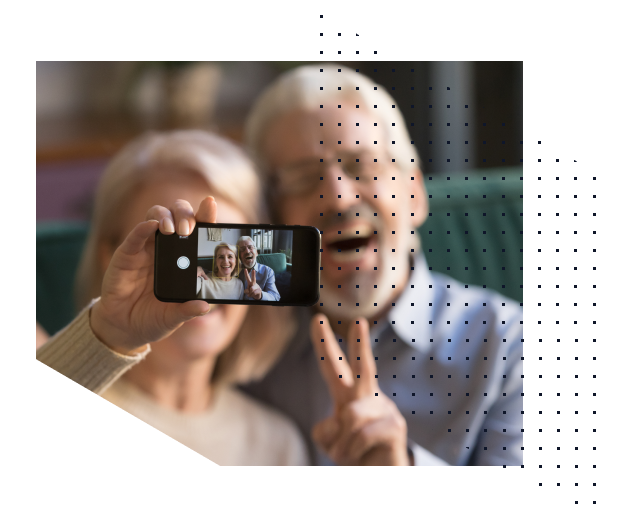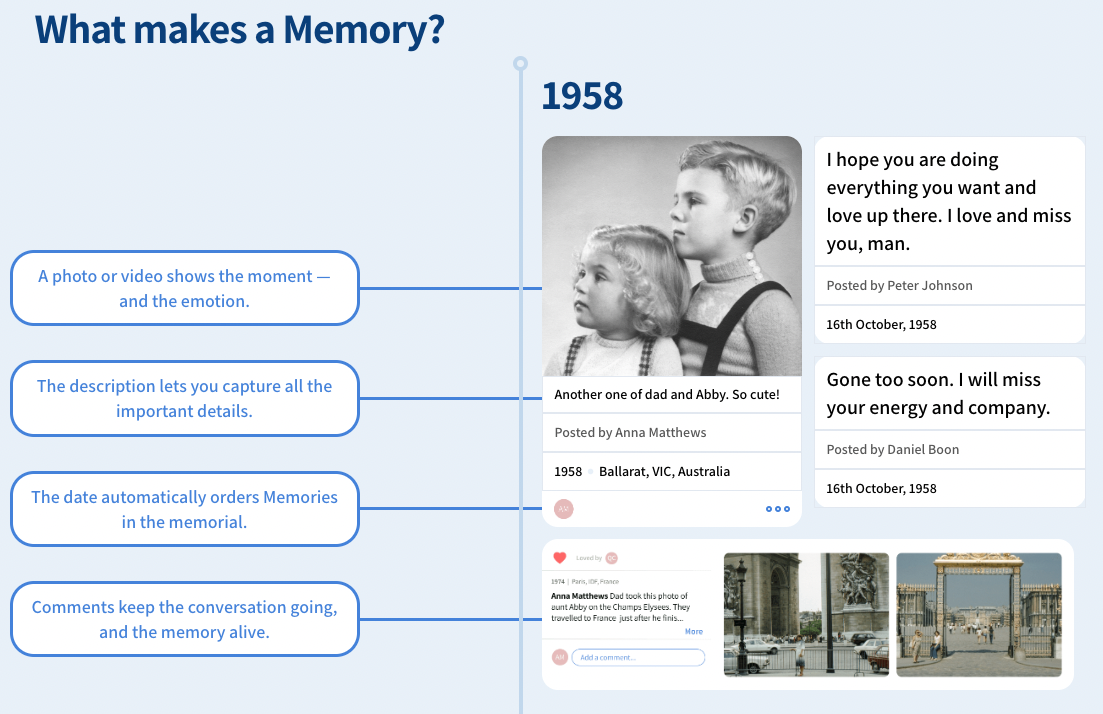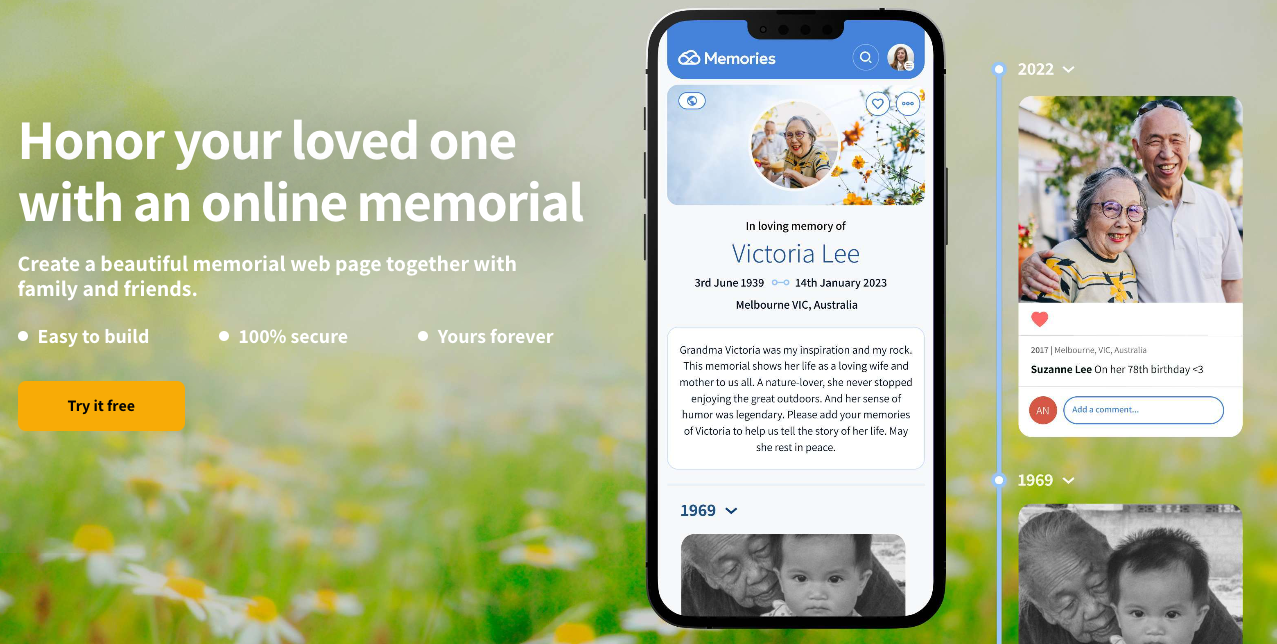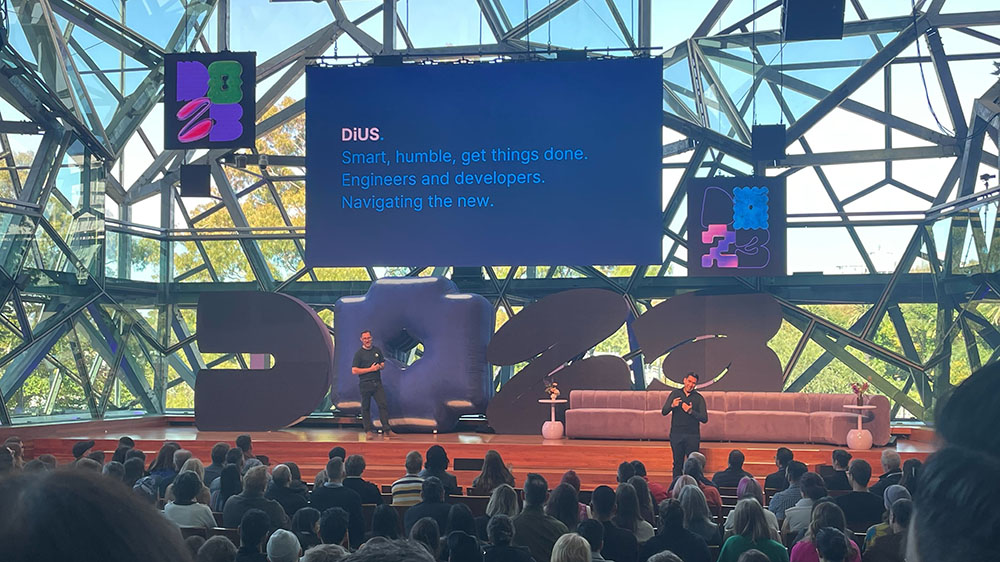CASE STUDY
Memories: Increasing subscribers through XD and a continuous delivery model
Memories increased subscribers to its online memorial platform by improving the digital experience for both consumers and business resellers.


At a glance
DiUS helped Memories by providing guidance on architecture and development practices, implemented new ways of working, and helped improve the customer experience overall. One particular initiative by the team on improving the onboarding experience for customers resulted in over a 30% increase in the activation of subscribers through a major reseller channel.
This work, and continued work from the Memories team since, has reduced lead time by 80%, increased deployment frequency by 700%, and reduced change fail percentage by 30%.
Our services:
Meet Memories
Memories Group is a digital legacy platform that connects family and friends with a reflection space. It also captures the most cherished memories and shares them with loved ones for generations to come. The platform saves and organises priceless photos, videos, scans, and stories, as well as the reflections of others about the loved one.
Memories launched in August 2020 amid the global COVID-19 pandemic. People all over the world found themselves separated from their loved ones for weeks, months, or even years at a time. The value of sharing life stories with close family and friends had never been more apparent.
Today, Memories serves customers in 195 countries, preserving 1.9 million memories for them, their families, friends and future generations in more than 500,000 online memorials and Memories Timelines. It’s also the partner-publisher of digital tributes for leading news mastheads across the UK and Australia, and the digital memorialisation partner for more than 250 funeral service businesses in Australia and New Zealand.


The challenge
Guidance on architecture and development practices to transition to a continuous delivery model
The online memorial industry has grown in recent years as technology has made it easier to create and share digital content, and more people now use the internet to connect with others. While the industry itself is relatively new, it faces significant competition from existing social media platforms, like Facebook and Instagram, which are offering memorialisation features for free.
The team at Memories originally developed the platform with a focus on consumers, and later expanded through partnerships with funeral service providers to help resell their product. It reached out to DiUS to provide greater capacity to improve the consumer experience while still addressing the needs of its business customers.
DiUS was brought in to provide additional support for the delivery teams based around the Asia Pacific region, as well as advice and guidance on architecture and development practices to enable the transition to a continuous delivery model.
What we did
Improved ways of working with a better customer experience
Uplifting tech practices
We began by working closely with the Memories team to analyse the existing platform, engineering practices, and documentation. We developed a new architectural pattern for future development, rationalised Continuous Integration and Continuous Deployment (CI/CD) infrastructure, and implemented a consistent Agile approach to delivery.
By working directly with the technical teams in Memories, we helped improve software delivery through agile practices, code reviews and pair programming, and code quality improvements. We implemented agile management ideals by facilitating exercises such as sprint planning, retrospectives, standup and backlog grooming. Finally, we leveled up the expertise of team members as well as the rest of the company staff in employing agile and scrum practices to improve workflow.
Creating a better customer experience
The DiUS team conducted research using a variety of methods, including user interviews and analysis of existing memorials on the platform, to understand the needs and preferences of potential subscribers. This research revealed a number of key insights, particularly that the existing pricing model of a single once-off fee was a barrier for many users.
Based on these insights, the team conceived several experience design initiatives to drive engagement and increase conversions. These included:
- Adopting a product lead approach that allowed potential members to sign up and use the platform for a free trial period. This would allow the user to assess the product’s value before committing to a subscription.
- Leveraging a network effect by elevating the prominence of invite and share functionality within the platform and guiding users in creating a beautiful memorial that they would want to share with others. Research showed that memorials with multiple contributors had a higher proportion of long-term engagement, and the team hypothesised that memorials with multiple contributors would lead to increased conversions among the free trial cohort.
- Undertaking updates to the user interface and user experience that focused on reducing complexity, particularly in the area of privacy management. Interviewed participants had expressed a desire to control who would be able to see the memorial at any given time, and the team redesigned the privacy settings to give members the control they wanted. The guiding design principle was to express settings in plain language that was void of jargon and technical speak.
Delivering new features
Using the customer experience findings, we developed several new features including the platform needed to support the free-trial program, embedded payments to make the payment process easier, and creating a digital guestbook that paved the way for more user engagement.
These were all implemented using agile and scrum methodologies using a React UI with .NET core backend and AWS Lambda with some services moving to nodeJS backend.
- 10-day free-trial platform enables users to sign up easily with either their email or with an existing Google, Apple or Facebook account. It was created using both the React.js front-end and ASP.NET Core backend using .NET core.
- Embedded payments platform was created using .NET core using Chargebee (built on stripe) and simplifies the payment process for users since they’ve already created an account.
- Digital guestbook enables funeral service guests — and those who can’t attend — to pay their respects in the moment. It was created using React.js frontend with .NET core backend, using HotJar and Growthbook for feature testing.


“A DiUS team is always top quality. As a company, they understand how good product delivery teams work, and they hire excellent individuals who know how to build quality software. When we have the need to drop in a team that will hit the ground running, DiUS is where I go.”
– Brenton Worley, Chief Technology Officer, Memories Group
Results for Memories
Streamlined operations and increased subscribers
The efforts of the product team resulted in a marked uptick in the number of direct subscribers to the Memories platform. In addition to this quantitative success, the team also received positive feedback from users about the updated design and new features. One particular initiative by the team on improving the onboarding experience for customers resulted in over a 30% increase in the activation of subscribers through a major reseller channel.
The new ways of working established a better work pipeline and developed a full-stack cross-functional culture. We built a User Interface (UI) component library and atomic design framework to establish consistency across the product. This means user experience designers can work with developers to create a series of UI elements for consistency across their application, in addition to developers being able to assemble components in a reusable and testable way.
We also laid the foundation for event-based processing through microservices in AWS Lambda and API Gateway which increased the rate of change to production by simplifying new services, and deploying through infrastructure as code using AWS CDK. This results in simpler and more standardised DevOps within the team, and faster delivery of changes for business. This work, and continued work from the Memories team since, has the following improvements in productivity:
- Lead time reduced by 80%
- Deployment frequency increased by 700%
- Change fail percentage reduced by 30%






